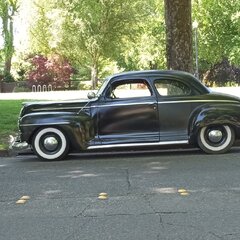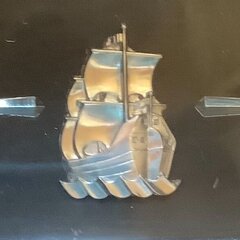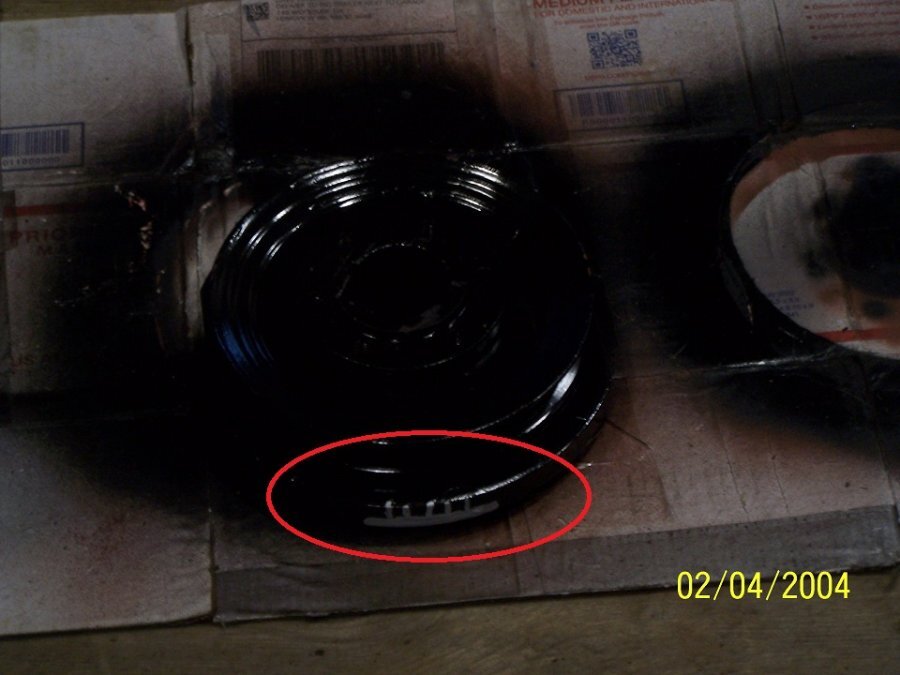-
Posts
968 -
Joined
-
Last visited
-
Days Won
17
OUTFXD last won the day on November 9 2023
OUTFXD had the most liked content!
Reputation
338 ExcellentProfile Information
-
Gender
Male
-
Location
Washington
-
My Project Cars
1946 Plymouth P-15 Special deluxe
Contact Methods
-
Biography
I was born, lived, and am now waiting to die.
-
Occupation
"Medically Retired" Sandblaster
Converted
-
Location
Washington State
-
Interests
Anything with an Engine
-
Title says it all. Just curious!
-
I pulled the grill for better access. turns out the hub was turned in a different direction than I thought. *rollseyes*. now I am on to a different missing part. trying to locate a water pump pulley. Kinda blows my theory out of the water about the mechanic taking stuff home to paint. I painted the water pump pulley when I replaced the water pump last year.
-
Having some free time I rumaged through the tools left by the mechanic and it turns out HE has a balancer puller so my question was moot!
-
Alright. Thanks! Was kinda hoping for a put peanut butter in the hole and screw the nut down tight kinda work around.
-
Okay, needing more help. Trying to get her back together. The mechanic put the crank hub back on without the pulleys (visible in the engine bay pic). I tried mounting the pulley several times but can only get 4 of the 6 screws to start, and yes I know that 2 of the holes are closer together than the other 4. The problem I am currently facing is how to get the hub OFF the crank so I can install the complete assembly (I have two crank hubs, One on the engine, one in the "new" harmonic balancer/pulley assembly) HALP!
-

Autolite 295 Sparkplugs at Walmart equal to Champion J8
OUTFXD replied to desoto1939's topic in P15-D24 Forum
I like to say im 18 with 36 years of experience. -

Borg and Beck / clutch release lever adjustment
OUTFXD replied to bellemecanique.ch's topic in P15-D24 Forum
-
Got my hands on some "new" parts. First Pic is engine compartment as left by the mechanic. Fourth pic is new timing marks
-
Not sure which we are talking about. On the side of the exhaust manifold below the carb is the pre-heater. Twords the back of the block between the intake manifold and block on one of the exhaust manifold runners is the Sisson automatic choke.
-
Thanks! It answers some of my questions! Though from the way it looks, the hub goes on after the balancer/pulley assembly. The hub is the threaded part meaning the bolts would need to be passed through the balancer/pulley to the hub with the bolt heads facing the engine and the threads facing away from the engine. This just seems backwards to me. But if that is the way it is, then so be it.
-
Its not electrical. Works purely on Engine heat. Glad yours is free! Mine was rusted open! Best of luck with your project!
-
I believe its the carb pre-heater. When the engine is cold, the coil is short. It routes Exhaust gasses the just below the carberator to warm it up faster on cold weather starts. When the engine warms up, the coil expands closing the butterfly so the exhaust gasses dont overheat the carb causing fuel boil. Many people have just blocked this off and claim it doesnt have a noticable affect on drivability. however if it rusts open, it can lead to fuel boil. just make sure the inner pivot moves freely.
-
To catch up people not in the know. I had a mechanic disappear with some of my motor parts. I am now collecting the missing parts. The problem I am now facing is... I didnt take it apart, so now I dont know how it goes back together. First. does the collar go on first and the pulley/balancer bolt on to it, or do the pulley/balancer bolt to the underside of the collar and fit between it and the crank Also, which side of the pulley goes against the balancer? The flat side or the dished side? Thank you in advance!







